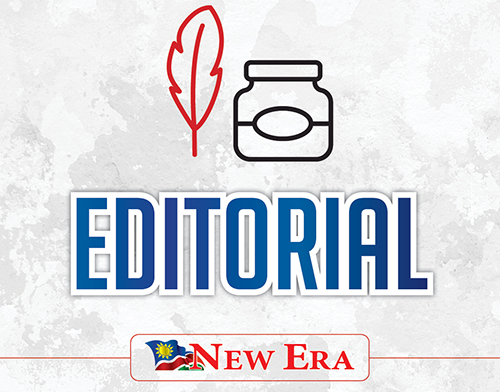The Bank of Namibia’s Monetary Policy Committee will announce its decision on the repo rate again next week. Whether the rate at which BoN lends money to commercial banks will increase and the commercial banks will immediately raise the interest rates for their clients is a foregone conclusion.
In recent months, this publication has written various articles about how ordinary Namibians struggle, how the theory the central bank clings to is outdated and how commercial banks make astronomical profits while their clients cannot keep their heads above water.
Last year, cooking oil, a basket item, was one of the first indicators of the impact of the Russian invasion of Ukraine.
While other factors certainly played a role, the insane price of vegetable oil, a household staple first, let Namibians know that they too would be impacted. Despite the adjustments that have been made to meet the shortage, the price has yet to return to even Covid-19 levels.
Average Namibians are being scalped, skinned and deboned to pay for retail executive bonuses at the end of the year. Lest we forget all the layoffs during the pandemic that have led to skeleton teams having to meet the same targets without an increase in wages. Across industries, workforces have been trimmed as the powers that be realised that the skeleton crew could bring in historic profits.While Namibians want relief, there is nothing they can do.
BoN increased the repo rate by a cumulative 300 basis points from 3.75% to 6.75% during 2022. The central bank increases the repo rate to slow down the annual inflation rate that averaged 7.1% in the first three months of 2023, compared to 4.5% during the corresponding period in 2022. Since February this year, the central bank has increased the repo rate by 50 bps from 6.75% to 7.25%.
The average home loan rate in 2021 was 8.5%, compared to 11.75% currently. For a house valued at N$1.2 million, the monthly repayments have increased by more than N$2 590 per month during the last two years.
The central bank is hellbent on taming inflation as part of its mandate. It is only the central bank officials who pray at the feet of this ineffective theory, as the average consumer feels BoN has failed miserably. Greedflation (historic profit margins for corporations driving inflation) has only very recently been brought up as a possible reason for the ongoing inflation. Across industries, profit margins since the pandemic have been up, and commercial banks even during the pandemic maintained steady profit margins, despite the financial quagmire Namibians found themselves in.
We could have said the monetary policy committee is out of touch because, as senior BoN employees, they certainly get paid the salaries and perks that put them beyond the struggles of the average Namibian. But just like the average Namibian consumer, the BoN monetary policy committee is also a sitting duck.
Just like the Namibian bosses of local commercial banks, the monetary committee has little to no authority or room to manoeuvre. They have to act on what the South African bosses decide. The Namibian dollar’s peg to the South African rand makes the committee’s existence quite superfluous but we need to keep up appearances.
The central bank has also adopted a laissez-faire approach to how it regulates commercial banks.
Commercial banks have shown they are incapable of acting humanely or being sensitive toward their clients’ struggles. Their unstoppable money-making machine must forge ahead – at all costs. This publication has for over a month struggled to get answers from Namibian banks as to why they hike interest rates to the detriment of its long-suffering clients, while the central bank has indicated they do not have to.
What we got was the banks ignored our requests for comment and referred our requests to the Bankers Association of Namibia, who gave a generic non-answer and referred all other inquiries to BoN. Economists say the current high inflation is being caused by supply issues but the central bank is convinced that making Namibians poorer is the only way to address inflation.
There is no further belt-tightening – no more lifestyle downgrading to be done. Namibians are standing on the brink of financial ruin and starvation, and the experts cannot be bothered to find a solution because it does not impact them. Their tables overrun, while tumbleweeds make a home on the average Namibian’s.
But we should show more understanding, as the central bank is also just a sitting duck – with little to no power to decide on a new path. The entire debacle also shows the inability of the big bosses at the BoN to think of an alternative to their stubborn decision or the fact that they too are sitting ducks, waiting for South Africa to call the shots.


